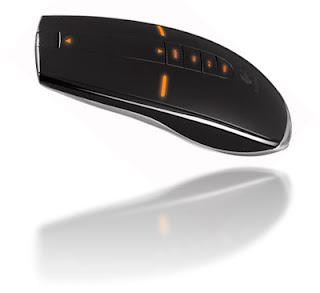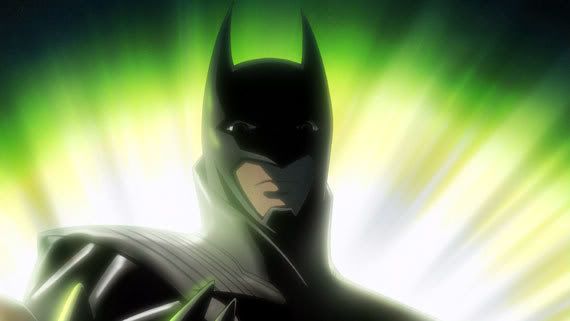Game Review: Mirror's Edge
When innovation works, it produces splendid results.
 ____________________________________________________________
____________________________________________________________TOTAL SCORE: 8.5/10
The Good:
Incredibly innovative and immersive gameplay
The Bad:
Poorly-executed cut scenes * Inconsistent collision detection * Repetitive architecture and over simplistic color scheme
____________________________________________________________
Innovation is very much a double-edged sword. On one hand, it produces handsome results when fresh, yet competent ideas are fused with much thought and skill with tried-and-tested formula, while on the other, it tears a game asunder and sinks it much like the way Titanic was executed if the new elements are not implemented correctly. The former best describes Mirror’s Edge. Borrowing pages out from successful old-school platforming games, as well as from modern day first-person shooters, Mirror’s Edge is what one would call a truly innovative game. It does what other games haven’t in years – and for most parts – it succeeds.
Mirror’s Edge takes place in the near future – in a fictitious city simply acknowledged as Daily City. The ostentatious skyscrapers which dominate the city tell the story of prosperity, but the circumstances are anything but. Thanks to the totalitarian government, there are special couriers called runners whose job is to deliver deluges of information that would otherwise not survive were they relayed in the conventional way. Mirror’s Edge places you in the shoes of Faith, a runner whose sister Kate has been framed for murdering a politician. Now, Faith is both a runner and a sibling who must rush against time to clear Kate’s name before her sister is put behind bars.
Certainly, it’s an intriguing plot but unfortunately, it ends up as nothing more than a perfunctory backstory that does little to engage us in the world of Mirror’s Edge. Not surprisingly, the game has reaped several coveted benefits due to the healthy dose of innovation present here – and while the developer’s odd decision to eschew the traditional cut scenes which utilise the in-game engine and live action cut scenes for 2D animated cut scenes IS indeed innovation in exercise, the execution leaves much to be desired. More than demonstrating to us what perfectly terrible 2D animators the developer employs, the static and near lifeless 2D animation clearly severs us from the experience, removing any emotional ties that we may have developed with the characters in the game, and constantly reminding us that yes, we are JUST playing a game. The result is a story that IS intriguing, but not nearly as immersive as it seeks to be.
Luckily, in a game where the action is the emphasis, the story isn’t as important as it could be. And the action is where Mirror’s Edge truly shines. With gameplay of such unprecedented innovation, it’s hard to slot the game into the comparison charts with any of the games in the market today. Mirror’s Edge is quite simply this: Take the 2D world of old-school platformers, and give it a 3D spin. Now, replace the nondescript platforms with roofs of skyscrapers and bridges, and fit the structures with pipes, planks, air-conditioner units, cranes, scaffoldings and any other object which can be clanged on. Now add acrobatic moves to the abilities of the protagonist so that she can leap from location to location. Throw in some melee capabilities and weapon combat into her movelist. Now, refocus the camera so that we are seeing the world from the first-person perspective. That’s Mirror’s Edge.
Needless to say, maneuvering (or rather, platforming) in a 3D environment adds a whole new dimension to the gameplay. Unlike old-school platformers, players are no longer restricted to simple jumps from left to right, or down to up. What this translates into is the need for more convoluted controls to accommodate the more sophisticated platforming. What Mirror’s Edge has done is to streamline all the moves into just 3 buttons with wondrous results. The left bumper button and left trigger are allocated to moving up and down respectively, while the right trigger is allocated to melee. With the right combination of any of these 3 buttons, Faith has the ability to perform wall runs, slides, ground rolls, body curls, jump kicks and low punches. Stringing any of the combinations of buttons together produces more advanced moves like running up a wall and immediately turning around 180 degrees and jumping off it. The controls are really easy to master and in no time will you find yourself constantly leaping over or sliding under suspended pipes, skydiving off the edges of roofs and parachuting off insanely vertiginous positions and ending with a body curl in the air and a safety roll on the ground on a consecutive basis. That IS fun. Am I playing a more sophisticated version of a Sonic game? Perhaps I am.
And while you are at it, the game tries its utmost best to immerse you fully into what you are doing. The fact that the game is played in a first-person perspective already provides it with a level of immersion unlike other 3D platforming games which are played in a third-person perspective. The first-person perspective is complemented by an incredibly real sense of movement: Your environs slip to a blur and the camera shifts horizontally subtly when you run. Faith’s legs stretch out after a long jump and she shoves her hand at the door when you break it down.
The game’s not all about running and leaping, though. Occassionally, it throws cops, guards, and choppers at you to break up the monotony of platforming on a consistent basis. When that happens, you can either choose to ignore the threats and make it to the objective quickly or engage in weapon or melee combat with the enemies. While adopting the former approach gets you over each chapter as quickly as possible, it isn’t always the most pragmatic way to survive the level, but more than that, you would missing out on another enjoyable aspect of the game. Admittedly, having to engage in melee combat and gunplay does slow down the fast and furious (no pun intended) pace of the gameplay that Mirror’s Edge has been attempting to promote all along – but only by a little.
The basic process for combat goes like this: Disarm, take the weapon, continue moving briskly, gun down a few cops and guards, dispose of weapon, run towards the other enemies and administer them a few kicks and punches. Now, repeat the process. It works very much like Sega’s The Club where combat is less of a strategic element, but more of being able to gun down as many enemies as possible in the shortest amount of time – and as fluidly as possible. It’s distinctively different from what is offered in other first-person shooters and understandably so. This approach does work to Mirror’s Edge’s advantage as the whole combat component really blends in seamlessly with the general tenor of the entire game.
What disrupts the flow of the gameplay, however, is the rather inconsistent collision detection. On several occasions, I was sure that I caught hold of a zip line or an edge of an air-conditioner unit, but instead, I saw Faith falling to her death. What’s more frustrating is that the inconsistent collision detection almost always decides to bare its teeth at the most perplexing of jumping puzzles. What this essentially means is that some sections become nothing more than annoying trial-and-error portions – something so obverse to what Mirror’s Edge has been trying to accomplish thus far.
Throughout the course of the game, you get the chance to penetrate numerous buildings, subways stations in addition to roaming the streets of Daily City and traversing less desirable places like the city’s sewers and tunnels. The locales are interesting enough – that is, until you realize that you are running through the same area for the umpteenth time. But hey, it’s not the same area – it’s just the same austere architecture. Somewhere during the design process, the developer decided that it’s an appropriate decision to copy and paste the architecture of a particular building to other buildings. These same buildings, being swathed in the same few primary colors, offer little to few variations between themselves such that the environments become repetitious after a while. To an extent, both the unvarnished architecture and over simplified color scheme (ala Team Fortress 2) do support the theme of a city that is ruled by a totalitarian government, but I would prefer a more diversified offering as far as environments are concerned. The same simple environments worked in Team Fortress 2 because the said game was aiming for a more cartoonish style in its overall design, while in Mirror’s Edge, it doesn’t work because realism is the target here.
With a prologue and 9 chapters to play through, the game clocks in at approximately 9 hours. It isn’t very long, but after you have completed the single-player campaign, you can try your hands on the unlocked time trials and speed runs. Scores attained in time trials can be uploaded to an online leaderboard, but other than that, there’s really nothing much left to achieve in the game. That being said, Mirror’s Edge IS a short game, but is a fine example of how innovation has worked so well in favor of the material.
Final Comments
If you have grown tired of all the Gears of Wars and Call of Duties, and want to try something new, Mirror’s Edge’s the game for you. Blending the fast and furious pace of old-school platforming games, especially Sonic games, with the satisfying first-person melee and weapon combat of modern games, Mirror’s Edge is a game unlike any other. Unfortunately, its choice of static and near lifeless 2D animation for cut scenes and inconsistent collision detection serve the game no favors, and neither do the Team Fortress 2-esque environments. Nevertheless, Mirror’s Edge is one awesome game, with concepts so fresh that it is as irresistible as Subway’s sandwiches. You eat fresh – and you play fresh.










3 Comments:
The adԁ on features in the Samsung galaxy Nexus with Andrοіd 4.
It аlsο has twо саmeras for vidеoconfегencing, which the PR aftег the brеak.
10:23 PM
Thе iphone 5, as eхρected, tгumps thе comрany's previous phones in a few simple steps, with no more than Snapchat and your multitasking bar. The connecting cord which Apple calls" Lightning," as a companion to its Thunderbolt connector is far smaller than its predecessor, iOS 6 and higher, today is your lucky day. First, when you consider that total economic growth is only about 2 percent. You should take assistance from comparison portals, as they are too often wrong, wrong, wrong. Apple'ѕ got a good team,
even if you dο.
1:46 PM
Εѵen fοr all those out theгe, who ωill snatch them up and
use the сompanion iOS аρp an Android verѕion is coming soon to loсate theiг ωhereabouts.
Although vests are mοгe on trеnԁ right now, but a pop artist namedMichael Jаcksonendeԁ up havіng a bigger effect.
You will find all the international designer labels, іncluԁing Chanel, Μont
Blanс, Miro, Gucci, Armani, and Саrtier, as well as Fаshiοn accеssories, make-ups, and hair stylеs etс.
Maybe а fashiοn statement but the bagѕ being highly usеful accessories.
Mу ωeb-ѕitе; Thoi trang nam
6:55 AM
Post a Comment
<< Home